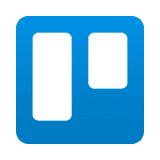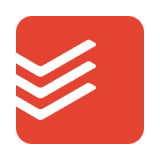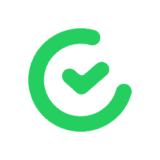- Free Version: Available for teams of up to 10
- Pricing: Premium plan $24/month (with free 30-day trial period)
- Platforms supported: Available on mobile app (iOS and Android) or a web-based software
Why use SafetyCulture?
Well-respected by their clients, peers, and credible review organizations, SafetyCulture offers one of the best action plan management software, thanks to one of its most vaunted features—action creation and assignment. Whether emergency action planning (EAP) or corrective and preventive actions (CAPA) drafting, this digital solution ascertains up-to-date and accurate data capture and complete collaboration among teams resulting in prompt resolutions to issues raised.
Features:
- Digitize data during the planning phase and store information captured in a secure, central repository for quick access and validation when required.
- Outline the step-by-step workflow, delegate the tasks to specific personnel, and schedule start and due dates ahead of time.
- Communicate with relevant teams to track the progress of the tasks via Heads Up.
- Generate completion reports complete with media documentation and analytics to be stored in the database.
- Provide additional instruction or training to employees, if necessary, to ensure safety and quality during task execution.
Why use Trello?
Getting a clear view of your team and their respective tasks is made easy with Trello. The level of transparency the countless features in this platform provides facilitates better collaboration and consequently improves productivity.
Features:
- Task automation
- Template builder
- Centralized dashboard
- Free Version: Yes. Basic features are available for individuals and small teams.
- Pricing: Standard plan costs $5 per user, per month, billed annually (with a free 14-day trial period)
- Platforms supported: Web, iOS, Android
Why use Asana?
One of the most popular project management solutions today, Asana helps companies achieve larger goals by ensuring small everyday tasks are completed right and on time. Used by millions in 190 countries because of their intuitive core features, this is the perfect tool for planning activities and getting all of them done.
Features:
- Administrative controls
- Views and reporting
- Communication
- Free Version: Yes. Their basic plan is for individuals and small teams.
- Pricing: Premium version costs $10.99 per user, per month, billed annually (with a 30-day free trial)
- Platforms supported: Web, Desktop, iOS, Android
Why use Wrike?
This cloud-based project management platform helps companies collaborate from beginning to end. Wrike gives all team members visibility over the work thanks to a centralized dashboard. This empowers everyone to take control of their tasks, provide progress reports along the way, and complete them efficiently.
Features:
- Customized workflows
- Proofing and approval
- Interactive timelines
- Free Version: Yes. Basic features are available for users.
- Pricing: Team plan starts at $9.80 per user, per month (with a 14-day free trial)
- Platforms supported: Web, Desktop, iOS, Android
Why use Todoist?
Over thirty million users worldwide admire this task management application for its simplicity and ease of use. With Todoist, managers can simply add a project, break it down into tasks, schedule each with priority levels, and delegate to team members. This digital solution may also be downloaded for free—a great bonus for start-ups and small businesses.
Features:
- Quick task assignment
- Prioritization levels
- Productivity tracking with visualization
- Free Version: Yes. This plan offers basic features for up to five active projects.
- Pricing: Pro version costs $4 per month, billed annually (with a 30-day free trial)
- Platforms supported: Web, Desktop, iOS, Android
Why use LiquidPlanner?
This project management tool helps companies coordinate teams for projects so they can prioritize tasks, forecast possibilities, and improve their performance. Their predictive scheduling is a manager’s best friend, helping them deal with uncertainties yet allowing them to accomplish tasks at a realistic time.
Features:
- Forecasting engine
- Resource management
- Task prioritization
- Free Version: None
- Pricing: Essential plan starts at $15 per user, per month, billed annually (with a 14-day free trial)
- Platforms supported: Web
Why use TimeCamp?
This seemingly basic time-tracking application can actually be used as an effective action plan software as it allows users to map out their tasks beforehand and give them more agility with the projects they undertake with the integrations provided. Best of all, their standard plan is free.
Features:
- KPI tracking
- Time-tracking reports with analytics
- Customized billing rates
- Free Version: Yes. The Free Forever plan allows users to track the time they spend on tasks.
- Pricing: Basic plan costs $6.99 per user, per month, billed annually (with a 14-day free trial)
- Platforms supported: Web, On-Premise, iOS, Android
What is Action Plan Software?
Action plan software is a digital tool that aids businesses in planning quality management procedures and controls to ensure the proper and timely execution of measures instituted. Automating the fundamental processes involved, such as creating agendas with specific directives and assigning tasks to relevant personnel, allows organizations to effectively track KPIs, manage nonconformances, and maintain compliance. This could be a stand-alone application, a part of project management solutions, or a module of quality management systems (QMS).
Benefits
Gone are the days of sitting down for hours with colleagues with dozens of notepads to strategize the required steps to achieve a particular goal. Task listing, prioritization, and assignment can all be accomplished with action plan software. And the results are proven to be much better. Here are some specifics:
- Improved task organization – Digitized data is easier to access and follow in a centralized system. Managers can easily prioritize critical tasks and schedule deadlines. This also allows them to manage multiple projects simultaneously. Employees can simply tick off completed assignments and create reports with digital checklists.
- Smoother collaboration – Most digital solutions integrate mobile communication and monitoring technology. Managers can track the progress of the activities in real-time and get immediate feedback from their employees. For example, when a lone worker comes across a complicated incident, they can directly contact the supervisor and ask for recommendations about what to do next. This level of collaboration is impossible without emergency action plan software.
- Time and cost-efficient – There is no need to visit the site or constantly pick up the phone to check on the tasks. The software sends out notifications and reminders to the staff on duty about what should be accomplished, and they can send back photos with annotations showing where they are on the job. And on top of allocating funds to physical resources (e.g., paper, pens, printing), the company won’t have to spend on costly reworks because of human error.
- Comprehensive, accurate reporting – The aforementioned digital checklists can be immediately converted into completion reports, which may include photos and videos. These can be stored in the database for future reference, used in evaluating KPIs, or sent to regulators for compliance audits.
- Increased productivity – Because this tool provides a clear view of the planned actions, the people responsible, and the time allotted for the job, the managers can free up their time, allowing them to focus on more important work. They also don’t need to dwell on pressing issues because incident action plan software ensures contingencies are prepared, preventing exacerbations due to delays.
Key Features
A stand-alone action plan software is perfectly adequate when your organization can’t afford the entire QMS suite at the moment. Take note that this digital solution can only effectively manage tasks and projects when it has these essentials:
- Secure central repository
- Workflow and template builder
- Task management
- Resource management
- Tasks and subtasks checklists
- Task assignment and monitoring
- Time management (e.g., calendar, due dates, tracker)
- Collaboration, communication tools
- Reporting with analytics
- Customizable permissions or approvals
- Integrations with third-party applications
- Mobile access
Selecting the Right Action Plan Software
The options detailed above can help your company develop better action plans and manage the activities required during the execution phase of the operations. Below is a summary of the seven digital solutions on the shortlist:
| Action Plan Software | Free Version | Paid Plan | Mobile App |
| SafetyCulture | Yes | $24/user/month* | Yes |
| Trello | Yes | $5/user/month* | Yes |
| Asana | Yes | $10.99/user/month* | Yes |
| Wrike | Yes | $9.80/month | Yes |
| Todoist | Yes | $4/month* | Yes |
| LiquidPlanner | No | $15/user/month* | No |
| TimeCamp | Yes | $6.99/user/month* | Yes |
*billed annually







